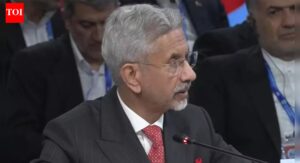Let us make quality cinema for our children |

Some of the greatest filmmakers India has ever produced have famously paid a heartfelt tribute to the child within. Bimal Roy produced Kabuliwala (1961), based on a story by Rabindranath Tagore and starring the great Balraj Sahni. Satyen Bose directed the heart-touching saga Jagriti (1954). Raj Kapoor produced Boot Polish (1954) and Ab Dilli Door Nahin (1957), while Satyajit Ray made films like Goopy Gyne Bagha Byne and Sonar Kella, which continue to enthral children even today.We usually associate children’s films with Disney-style animation, but globally there have been many outstanding cinematic achievements dedicated to younger audiences, such as the Iranian classic Children of Heaven (1997) by Majid Majidi.Bubbling Spring, a 1982 Chinese film, became a children’s favourite wherever it was screened. In 2024, Flow — a Latvian, French, and Belgian animation co-production directed by Gints Zilbalodis — was made using the free and open-source software Blender and went on to become the most-viewed film in Latvia. At the 97th Academy Awards, Flow won Best Animated Feature and also a Golden Globe for Best Animated Feature Film. Set in what seems like a post-apocalyptic world, the film argues for coexistence and empathy.The point I am trying to make is that today, there is no excuse to ignore cinema for children. Even with limited resources in the past and present, memorable classics have been created by filmmakers with intentionality. So why are so few children’s films being made in India today?There was a time when films like Jaldeep (1956) were aired on Doordarshan. Directed by Kidar Sharma, it was the first film ever produced by the Children’s Film Society of India (CFSI).CFSI, envisioned by Jawaharlal Nehru, came into existence in 1955 under the aegis of the Ministry of Information and Broadcasting. It produced many classics, including Shyam Benegal’s Charandas Chor, Tapan Sinha’s Safed Haathi, Sai Paranjpye’s Jādoo Kā Shankh and Sikandar, and Santosh Sivan’s Halo. CFSI was merged with the National Film Development Corporation (NFDC) in March 2022.
The absence of quality cinema for children today can be attributed to many reasons. One misconception is that content meant for children is not profitable. To counter this argument, let me cite a few examples. Sesame Street, conceptualised as an educational community for children, has been watched across the world for decades, thanks to its mix of live-action, comic sketches, animation, and puppetry. The success of films like Flow, Inside Out, The Lion King, Wall-E, Taare Zameen Par, and My Dear Kuttichathan in India shows that when stories are told well, they win over not just children but adults as well.To give you another example, which I have cited before, Bluey, an Australian TV series, was 2024’s biggest streaming show in the U.S., garnering over 842 million hours of viewing through November. Moana 2 has become the most-streamed movie of 2025. So let us not assume that younger audiences do not drive profits or footfalls on the small or big screen. Even 43 years after its release, Steven Spielberg’s E.T. the Extra-Terrestrial continues to attract multiple generations every time it is re-released.Childhood is a formative period when children absorb cues from what they see, read, hear, and experience. Cinema can help them process their world safely and teach them empathy and generosity — without talking down to them. Our industry does not lack talent or resources, and it is time to direct some of this energy towards creating quality content for the young.– By Anand Pandit







